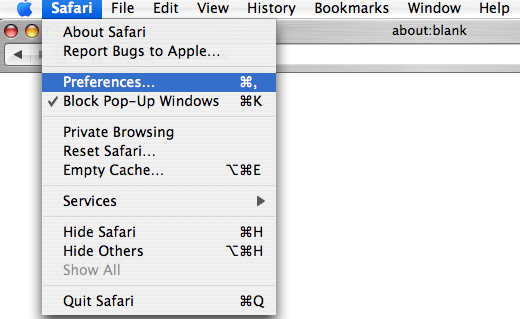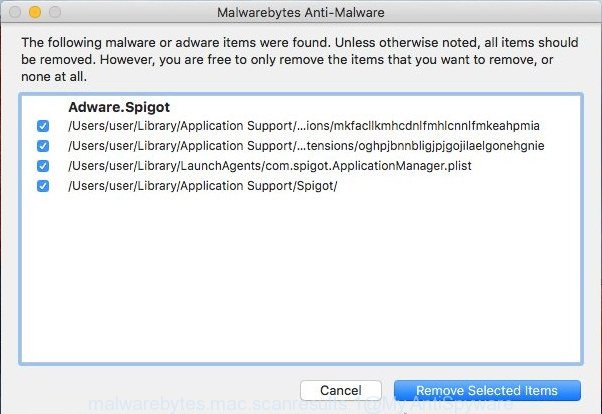Q. FeedBack 1.0 app (extension) help. Just appeared yesterday. I also believe it is adware. I have searched the Internet on this. Nothing is finding it. Just wanna know if anyone has any hints.
A. Sounds like some kind of adware software on your computer. Most probably, one of the programs you installed came with adware (also known as ‘adware software’). Adware is a type of invasive software — which can hijack machines — automatically redirect your browser to certain web-pages so the creators of those sites can make profit by showing advertisements to visitors. It is not a good idea to have installed adware. The reason for this is simple, it doing things you do not know about. And of course you completely don’t know what will happen when you click on any the adverts.

Unwanted ads
Another reason why you need to get rid of adware software is its online data-tracking activity. Adware may monetize its functionality by gathering user data from your browsing sessions. This privacy data, afterwards, can be easily used for marketing purposes. This puts your privacy information at a security risk.
Threat Summary
| Name | Feed Back extension, FeedBack 1.0 app |
| Type | adware, PUP (potentially unwanted program), pop-up advertisements, pop up virus, pop ups |
| Symptoms |
|
| Removal | Feed Back removal guide |
Thus, it’s clear that the presence of adware on your MAC system is not desirable, and you need to clean up your computer sooner. Follow the few simple steps below in order to delete Feed Back adware.
How to Remove Feed Back app (Adware virus removal guide)
The answer is right here on this web page. We have put together simplicity and efficiency. It will help you easily to clean your machine of Feed Back adware software which created to redirect your browser to various ad web-sites. Moreover, you may select manual or automatic removal way. If you’re familiar with the MAC OS then use manual removal, otherwise run the free anti malware utility designed specifically to remove adware. Of course, you can combine both methods. Please read the instructions carefully, after that bookmark it or open it on your smartphone for later reference.
To remove Feed Back, execute the following steps:
- Manual Feed Back removal
- Use free malware removal tools to completely remove FeedBack adware
- Use AdBlocker to block Feed Back and stay safe online
- Finish words
Manual Feed Back removal
The adware can alter your internet browser settings and reroute you to the web-sites which may contain tons of advertisements or various security threats, like hijacker, malicious software or PUPs. Not every antivirus application can identify and delete adware easily from your MAC OS. Follow the few simple steps below and you can remove Feed Back adware by yourself.
Uninstall Feed Back related applications through the Finder
Check out the Finder (Applications section) to see all installed software. If you see any unknown and dubious programs, they are the ones you need to delete.
Make sure you have closed all web-browsers and other programs. Next, remove any unwanted and suspicious programs from MAC using the Finder.
Open Finder and click “Applications”.

Look around the entire list of apps installed on your MAC OS. Most likely, one of them is the Feed Back that causes a large count of intrusive pop ups. Select the dubious program or the program that name is not familiar to you and uninstall it.
Drag the questionable program from the Applications folder to the Trash.
Most important, don’t forget, choose Finder -> Empty Trash.
Get rid of FeedBack from Mozilla Firefox by resetting browser settings
If Mozilla Firefox settings are hijacked by the FeedBack, your internet browser shows unwanted pop-up advertisements, then ‘Reset Firefox’ could solve these problems. It will keep your personal information such as browsing history, bookmarks, passwords and web form auto-fill data.
First, launch the Mozilla Firefox and click ![]() button. It will display the drop-down menu on the right-part of the web-browser. Further, press the Help button (
button. It will display the drop-down menu on the right-part of the web-browser. Further, press the Help button (![]() ) as shown in the figure below.
) as shown in the figure below.

In the Help menu, select the “Troubleshooting Information” option. Another way to open the “Troubleshooting Information” screen – type “about:support” in the web browser adress bar and press Enter. It will open the “Troubleshooting Information” page as displayed in the following example. In the upper-right corner of this screen, click the “Refresh Firefox” button.

It will open the confirmation prompt. Further, press the “Refresh Firefox” button. The Firefox will start a procedure to fix your problems that caused by the Feed Back adware. When, it’s finished, click the “Finish” button.
Remove Feed Back adware software from Safari
If you find that Safari browser settings like startpage, search engine by default and newtab having been changed by Feed Back adware software that causes browsers to display unwanted pop up advertisements, then you may restore your settings, via the reset web-browser procedure.
Run Safari internet browser. Next, choose Preferences from the Safari menu.

First, click the “Security” icon. Here, select “Block pop-up windows”. It will stop some types of popups.
Now, click the “Extensions” tab. Look for questionable extensions on left panel, select it, then press the “Uninstall” button. Most important to remove all suspicious plugins from Safari.
Once complete, check your start page and search engine settings. Click “General” tab. Make sure that the “Homepage” field contains the website you want or is empty.

Make sure that the “Search engine” setting shows your preferred search provider. In some versions of Safari, this setting is in the “Search” tab.
Remove Feed Back adware from Google Chrome
If you have adware problem or the Chrome is running slow, then reset Google Chrome settings can help you. In the steps below we’ll show you a solution to reset your Chrome settings to original settings without reinstall. This will also help to get rid of Feed Back from your internet browser.
First run the Chrome. Next, click the button in the form of three horizontal dots (![]() ).
).
It will display the Google Chrome menu. Choose More Tools, then click Extensions. Carefully browse through the list of installed extensions. If the list has the add-on signed with “Installed by enterprise policy” or “Installed by your administrator”, then complete the following guidance: Remove Google Chrome extensions installed by enterprise policy.
Open the Chrome menu once again. Further, click the option named “Settings”.

The web browser will open the settings screen. Another method to display the Google Chrome’s settings – type chrome://settings in the internet browser adress bar and press Enter
Scroll down to the bottom of the page and click the “Advanced” link. Now scroll down until the “Reset” section is visible, as displayed on the image below and press the “Reset settings to their original defaults” button.

The Google Chrome will display the confirmation dialog box as displayed on the image below.

You need to confirm your action, click the “Reset” button. The web browser will start the process of cleaning. When it is finished, the browser’s settings including new tab page, search provider by default and start page back to the values that have been when the Google Chrome was first installed on your machine.
Use free malware removal tools to completely remove FeedBack adware
In order to completely get rid of Feed Back, you not only need to uninstall adware software from your MAC system, but also delete all its components in your MAC including system folders. We recommend to download and run free removal tools to automatically free your MAC of Feed Back adware software which created to redirect your web browser to various ad web-pages.
Run MalwareBytes AntiMalware to remove Feed Back adware software
Manual Feed Back removal requires some computer skills. Some files that created by the adware can be not completely removed. We suggest that use the MalwareBytes Free that are fully free your MAC OS of adware software. Moreover, this free utility will help you to delete browser hijacker infection, malicious software, potentially unwanted apps and toolbars that your computer can be infected too.

MalwareBytes Free can be downloaded from the following link.
20949 downloads
Author: Malwarebytes
Category: Security tools
Update: September 10, 2020
After downloading is complete, run it and follow the prompts. Click the “Scan” button . MalwareBytes AntiMalware application will scan through the whole Apple Mac for the Feed Back which causes unwanted popup ads. While the utility is checking, you can see count of objects and files has already scanned. When you are ready, click “Remove Selected Items” button.
The MalwareBytes Free is a free program that you can use to delete all detected folders, files, malicious services and so on.
Use AdBlocker to stay safe online
By installing an ad blocker application like AdGuard, you’re able to block malicious web-sites, stop autoplaying video ads and remove a ton of distracting and unwanted ads on web pages.

- Visit the following page to download the latest version of AdGuard for Mac OS.
AdGuard for Mac download
3755 downloads
Author: © Adguard
Category: Security tools
Update: January 17, 2018
- After the download is done, run the downloaded file. You will see the “Setup Wizard” program window. Follow the prompts.
- When the setup is finished, press “Skip” to close the setup application and use the default settings, or click “Get Started” to see an quick tutorial that will assist you get to know AdGuard better.
- In most cases, the default settings are enough and you don’t need to change anything. Each time, when you start your MAC, AdGuard will run automatically and stop unwanted ads, block harmful or misleading websites.
Finish words
Now your computer should be clean of the Feed Back adware. We suggest that you keep AdGuard (to help you stop unwanted advertisements and unwanted harmful websites) and MalwareBytes Anti-Malware (MBAM) (to periodically scan your MAC OS for new adware softwares and other malware).
If you are still having problems while trying to remove Feed Back from the Chrome, Mozilla Firefox and Safari, then ask for help here here.

















